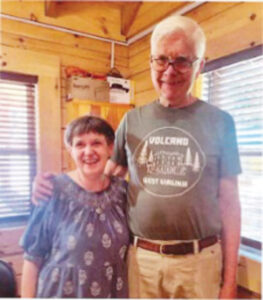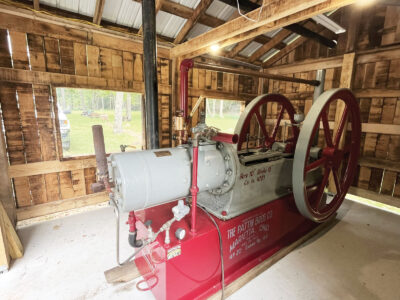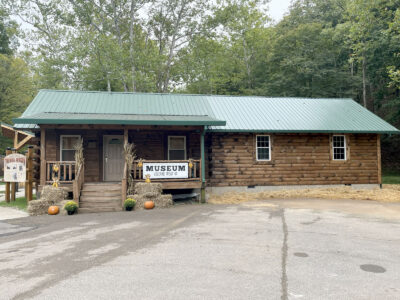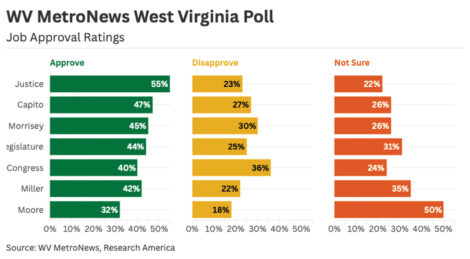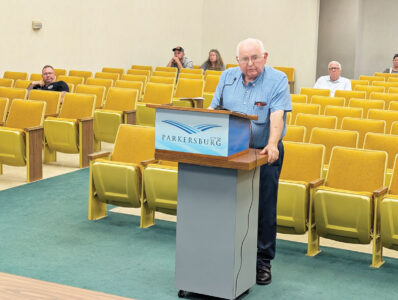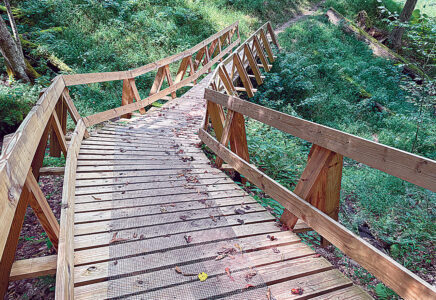Volcano Museum dedicates Naylor Room’s expanded exhibit space
- A dedication was held recently at the Volcano Museum at Mountwood Park of the new Naylor Room addition that will be used to expand the exhibit space at the museum which details the history of the oil-boom town of Volcano that was located in the area that is now Mountwood Park. (Photo Provided)
- The Volcano Museum at the Mountwood Park Visitors Center commemorated its new Naylor Room this past week as the museum has grown with a number of recent additions that detail the history of the town of Volcano. The room was named in honor of Carolyn and Mike Naylor who have worked to make the history of the former oil boom town an integral part of the park. (Photo Provided)
- Antero Resources made a donation of $10,000 in May 2024 to provide funds for a diorama of the town of Volcano during the oil boom at the Volcano Museum at Mountwood Park. The diorama was designed and constructed by Jimmie Bee and includes a detailed model of the town of Volcano that was based on historical records and photographs. The 4-foot by 9-foot diorama is in the middle of the new Naylor Room which was officially dedicated this past week. (Photo Provided)
- There is a Pattin Brothers Hit and Miss engine on display in a new building near the Volcano Museum at Mountwood Park that shows people how these engines operated and their importance to the area’s oil and gas history. The park’s maintenance staff built the building and the engine was donated to the park by a man in Williamstown who has had it for 35 years. Officials said the engine originally came from Grantsville. (Photo Provided)
- The Volcano Museum at Mountwood Park has doubled in size as park officials recently dedicated the new Naylor Room addition which is being used to house artifacts and other exhibits detailing the history of the oil-boom town of Volcano which used to stand in areas now a part of the park. The town burned down in a fire in 1879 and was never rebuilt. (Photo Provided)
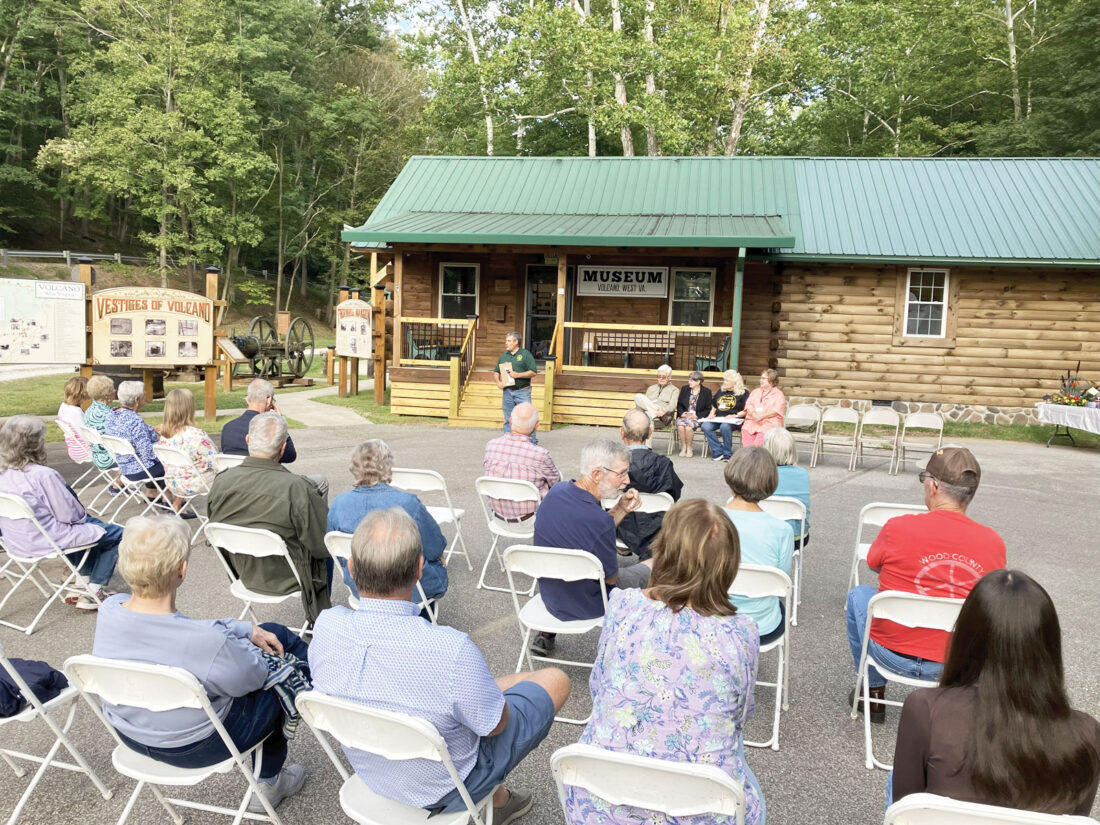
A dedication was held recently at the Volcano Museum at Mountwood Park of the new Naylor Room addition that will be used to expand the exhibit space at the museum which details the history of the oil-boom town of Volcano that was located in the area that is now Mountwood Park. (Photo Provided)
VOLCANO — The oil and gas history of the Volcano area of Wood County is coming more into focus as a museum celebrating that history just underwent an expansion at Mountwood Park.
The Volcano Museum which is in the Mountwood Park Visitors Center commemorated its new Naylor Room this past week as the museum has grown with a number of recent additions that detail the history of the town of Volcano.
The room was named in honor of Mike and Carolyn Naylor who organizers said have worked to make the history of the former oil boom town — the park now encompasses the original site of the town — an integral part of the park.
Mike Naylor became involved with Volcano and the park after retiring as a way to stay active and be involved locally.
“I looked at the information that was available at the park and I saw there wasn’t much done about Volcano,” he said. “I dug deeper and found out there was a lot about Volcano that probably most people didn’t know.”
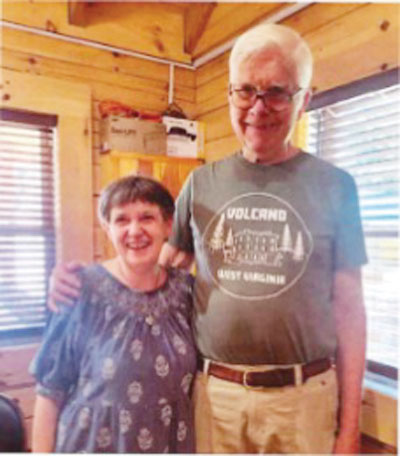
The Volcano Museum at the Mountwood Park Visitors Center commemorated its new Naylor Room this past week as the museum has grown with a number of recent additions that detail the history of the town of Volcano. The room was named in honor of Carolyn and Mike Naylor who have worked to make the history of the former oil boom town an integral part of the park. (Photo Provided)
His mother Naomi was originally from around that area and he wanted to dig deeper into its history.
The oil boom town of Volcano was in the White Oak region of Wood and Ritchie counties. Shortly before the end of the Civil War it had emerged as a major oil producing town, according to a historical marker for the site of the Thornhill estate.
The estate was built by W.C. Stiles in 1874, who was known as the “Father of Volcano.”
Volcano had an opera hall, bowling alley, hotels, restaurants and shops to cater to every need by 1870 and at its peak it had a population of 2,300, the marker said.
The first railed road completed in West Virginia, the Laurel Fork and Sand Hill Road Railroad, was built in Volcano by 1870 to transport oil to Parkersburg, according to the marker. An oil pipeline was built by 1879 but a fire burned down the town in August of that year and the town was never rebuilt due to oil production declining, the marker said.
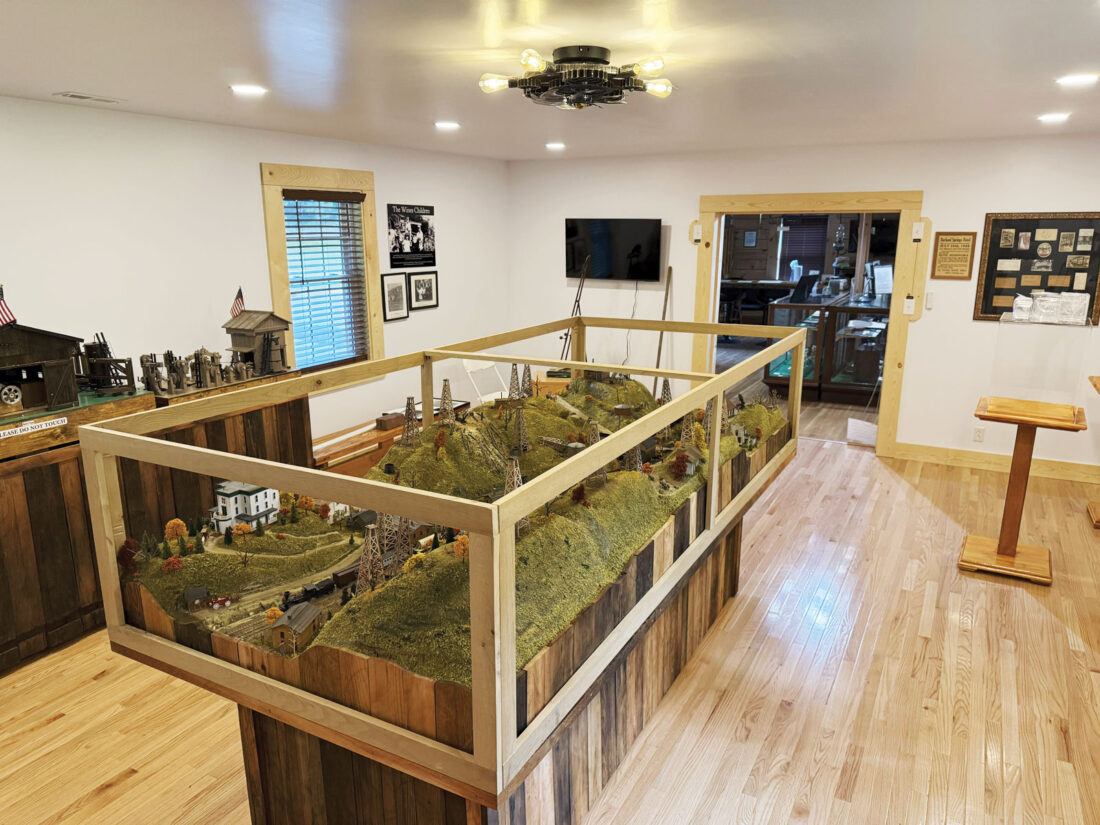
Antero Resources made a donation of $10,000 in May 2024 to provide funds for a diorama of the town of Volcano during the oil boom at the Volcano Museum at Mountwood Park. The diorama was designed and constructed by Jimmie Bee and includes a detailed model of the town of Volcano that was based on historical records and photographs. The 4-foot by 9-foot diorama is in the middle of the new Naylor Room which was officially dedicated this past week. (Photo Provided)
“It was thriving at the time,” Naylor said.
As Naylor continually did research he found more and more information about the town.
“Quoting Paul Borrelli, once you get involved with this stuff, it is like a virus. It just spreads through you,” he said. “That is true.
The Volcano Museum was founded in 2012 and has been an important resource in detailing the history of the town, park officials said.
Wood County Parks Director Jeremy Cross said the new addition had “doubled the square footage of the museum,” but he didn’t have the exact measurements of the total space. This is the second addition made to the building after a previous one in 2016.
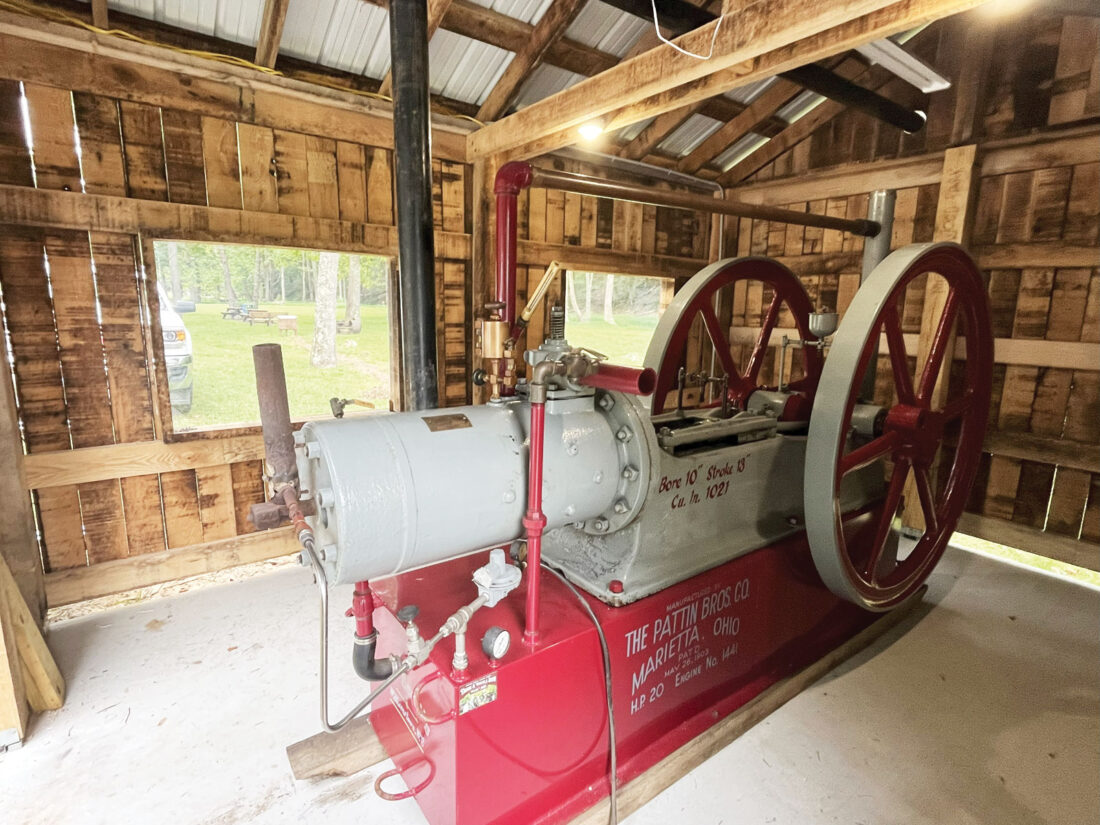
There is a Pattin Brothers Hit and Miss engine on display in a new building near the Volcano Museum at Mountwood Park that shows people how these engines operated and their importance to the area’s oil and gas history. The park’s maintenance staff built the building and the engine was donated to the park by a man in Williamstown who has had it for 35 years. Officials said the engine originally came from Grantsville. (Photo Provided)
“Since 2016 we have had so many people donate items that we needed more room,” Cross said.
A number of entities have provided grants and other funding to help the museum.
The Parkersburg Area Community Foundation did a donation that allowed for the purchase of an antique oak map cabinet to house the Museum’s original documents. Antero Resources made a donation of $10,000 in May 2024 to provide funds for a diorama of the town of Volcano during the oil boom.
The diorama was designed and constructed by Jimmie Bee and includes a detailed model of the town of Volcano that was based on historical records and photographs. The 4-foot by 9-foot diorama is in the middle of the new room, Cross said.
There is also a crazy quilt from Volcano in a case on display as well as cable system models, engine models and more that have gone into the museum.
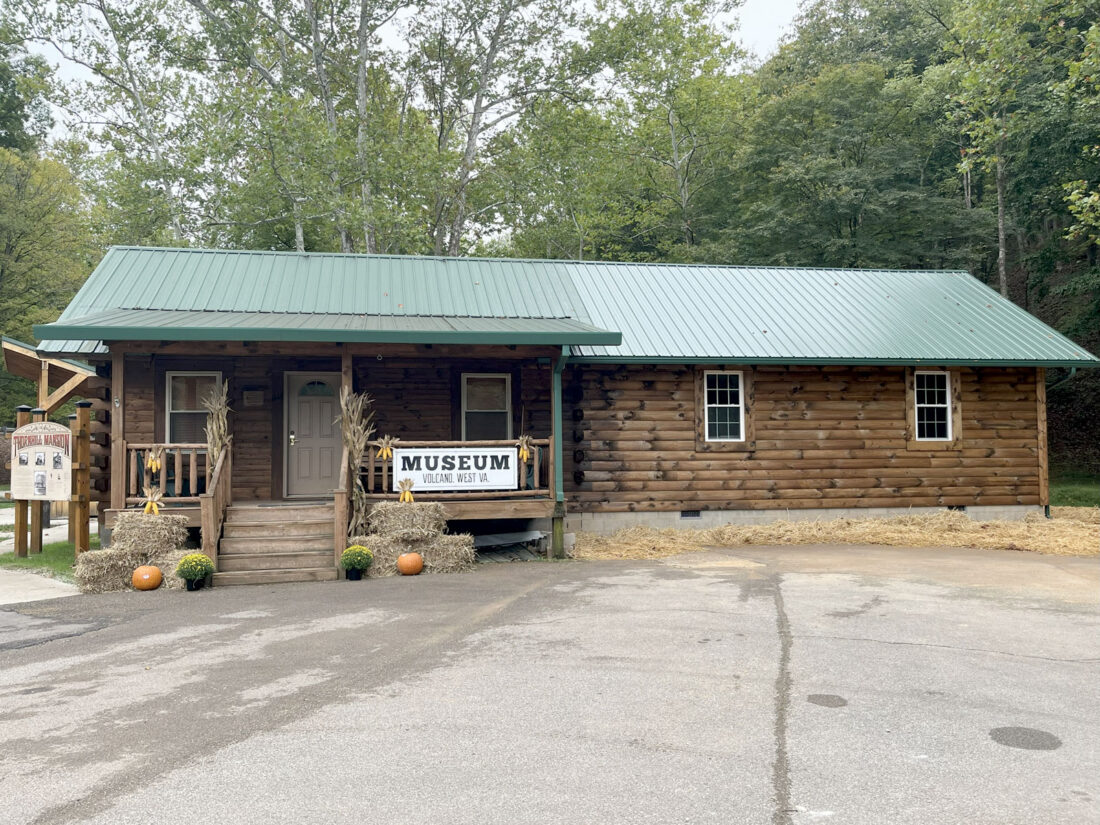
The Volcano Museum at Mountwood Park has doubled in size as park officials recently dedicated the new Naylor Room addition which is being used to house artifacts and other exhibits detailing the history of the oil-boom town of Volcano which used to stand in areas now a part of the park. The town burned down in a fire in 1879 and was never rebuilt. (Photo Provided)
There is also an Endless Cable System Mural that presents the operation of the endless cable pumping system that was invented by Stiles and installed in Volcano oil fields in the early 1870’s.
The Oakland Foundation donated $5,000 to provide recessed and specialized exhibit lighting, as well as electrical access for the new room and displays.
Naylor is glad the museum is in place to detail this part of the area’s history and has become an important part of the park.
“It means hard work pays off,” he said.
There is also a Pattin Brothers Hit and Miss engine on display in a new building near the museum that shows people how such engines operated. Cross said the Wood County Flywheelers came out and taught him and his staff how to operate the engine so they could stat it up when visitors wanted to see it operating.
Cross credits Naylor with making the history of Volcano an important part of the park.
“When I came in 2011 there wasn’t much being done with the history at all,” he said. “Mike was very interested in history.
“We were on the same page and every year we have added something new to the museum and the outdoor area. This allows the public to come and see the history. Of Volcano right here at Mountwood Park. This history is really a part of the park now.”
Naylor credits Cross with being committed to preserving the history of the area.
Next, Naylor will be restoring an old engine house that needs a lot of work. He will be applying for grants to do it. An engine house was where the engine was maintained and it powered a continuous steel cable to each oil well site by way of a series of wooden wheels and pumped multiple oil wells continuously at once.
“Those were different sizes and different angles to maximize their efficiency,” Naylor said. “This allowed the Volcano oil operators to maximize their profits as you wouldn’t need as many people to operate it.
“This was high tech for the time.”
Being involved in local history can provide many people with opportunities to learn more about themselves through learning about this area.
“I am amazed at what I learned,” Naylor said. “When I started this, I didn’t know squat.”
He has “adopted” the people of Volcano who have been gone for a long time to make sure their memory and way of life is remembered.
“If anyone says they want to live in the ‘good old days’ they are psychotic,” Naylor said with a laugh. “These people never had an easy day in their lives, yet they were proud, upright, did not have nice clothing, but they always looked straight ahead.”


